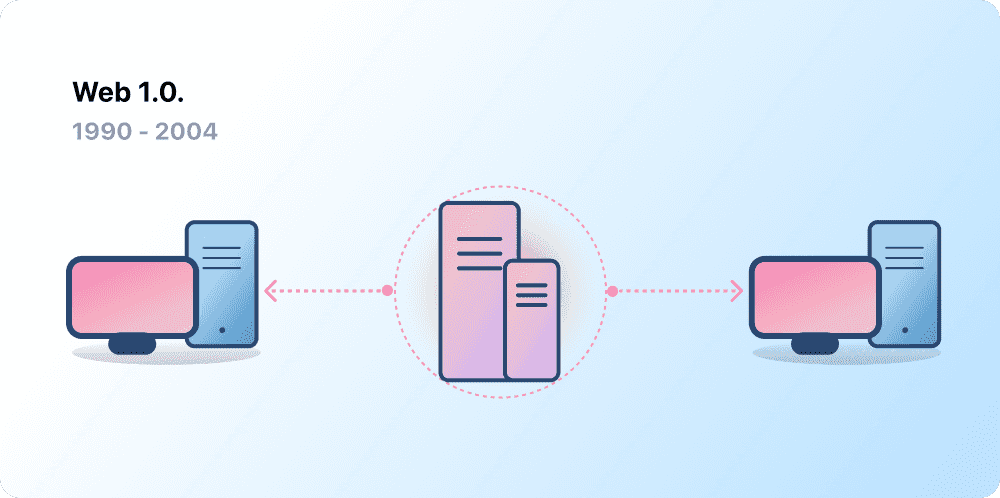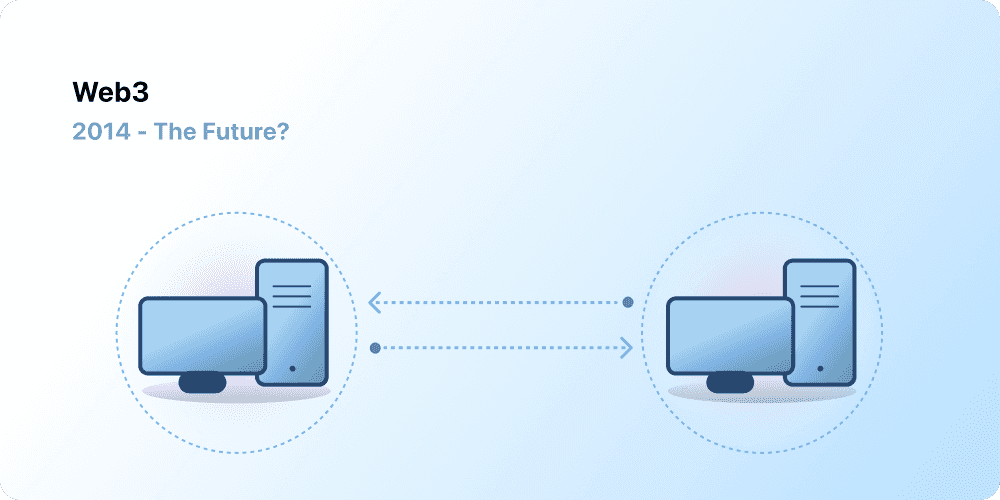The concept of Web3 has been receiving a lot of attention from the global digital community in the last several years. Tech giants such as Meta and Microsoft have taken the course towards metaverses and virtual reality, supporting the idea of Web3 becoming the next generation of the internet. Let’s unravel what Web3 means, its features, and how it can reshape the modern digital space.
Web 3.0 is an idea for a new internet iteration built on decentralization, blockchain, and token-based economics principles.
Many argue that it has the potential radically change the World Wide Web in the next ten years, providing more freedom to users and increasing data security and scalability. Its main goal is to create a fully decentralized and accessible Web space independent of tech giants’ influence.
From Web1 to Web3: History of the Internet
To truly understand the concept of Web 3.0 and why everyone is so enthusiastic about its future prospects, let’s see how the internet has transformed over the years.
| Web 1.0 | Web 2.0 | Web 3.0 |
| Read-Only | Read-Write | Read-Write-Own |
| 1990-2004 | 2004 – now | In progress |
Web1: Read-Only Era
The concept of Web 1.0 was introduced by O’Reilly Media co-founder Dale Dougherty to characterize the first development period of the global network, which lasted from its launch in 1989 to the early 2000s. At that time, the user’s role was limited to reading information. It was mostly static HTML websites with minimal media content owned by centralized companies.

Web2: Read-Write
Web 2.0 came next when the first social media platform emerged in 2004. Instead of restricting user rights to read-only, developers started using dynamic content, allowing them to fill the pages with their texts, images, and videos, as well as express opinions and communicate with each other on the website. During this period, an advertising-driven revenue model has also emerged, which we can thank for multiple ads during watching a 10-minute YouTube video.


Web3: Read-Write-Own
Web 3.0 is the era of reading, writing, and doing. The term was introduced by Ethereum’s co-founder Gavin Wood, describing the next-generation internet that provides complete freedom and eliminates the need for trust in centralized systems. It is expected that the Web 3.0 era will gain a foothold once the virtual reality, 3D graphics, and artificial intelligence are accessible and mass adopted.


What Will Web 3.0 Look Like: Main Features
When it comes to ordinary people with no tech background, Web3 is something like a utopian Internet, where everything will be for the end user. It should protect web participants from large corporations collecting their private data, reduce fees and provide a “fair” internet.
Feature #1: Artificial Intelligence
The main difference between Web 3.0 and Web 2.0 lies in semantics: artificial intelligence will allow algorithms to “understand” the content and its context of what is said and written on the web. As a result, computers will be able to process user requests more efficiently and provide better search results.
Feature #2: Trustless and permissionless
Web 3.0 allows users to interact directly with each other, eliminating the need for intermediaries. In simple terms, anyone can access the Internet without providing personal information or making a request via a centralized server.
Feature #3: Decentralized and secure
The next-generation Internet will be built on blockchain technologies, allowing for better security and transparency. In distinction to Web2, which involves storing information on localized servers, the data in Web3 will be copied across all network computers. As a result, such an ecosystem will be much less susceptible to hacks and malfunctions.
Examples of Web 3.0 technologies
Although the Web3 Internet is still in the works and it will probably take years before mass adoption, the technology itself is applied in multiple industries. For instance, when you shop for clothes on Amazon or a new song on Spotify, artificial intelligence helps to optimize your search results and recommendations via neural networks.
Other examples of Web 3.0 technologies include
- Blockchain. It enabled the decentralization of digital money, social networks, data storage, personal identification, content certification, content platforms, etc.
- Internet of things. Already, IoT devices help track the logistics through the supply chain, deliver goods to people’s homes, control unmanned vehicles, etc.
- Virtual reality. Due to VR helmets becoming cheaper and more accessible, virtual reality platforms are gaining more popularity and are currently produced by several major players, including Amazon and Sony.
Web3: Future of Internet or a Utopian Fantasy?
Currently, Web 3.0 internet exists only at the concept level, but many of its elements are already available to the average user. Still, for the concept to transform into a fully decentralized global and fair ecosystem, we require a higher level of adoption. The same VR goggles: despite being less expensive, they are still far away from cheap or accessible. Moreover, using Web 3 would require additional knowledge, skills, and education.
Summing up, Web 3.0 is definitely the way we are going, but when we get there — is an open question still.

